Editors of the Vineyard Gazette (Dear sir or Madam, as the circulars say):
Your recent editorial is luring me away from Vineyard localisms to Vineyard poetry. As you say, the Indians were our first and best poets. They lived close to Nature. They did not borrow their language as we have done. The made it, advancing from the concrete to the abstract by singing flights of fancy. What a pity it is that our Puritan ancestors could not justly weigh the mine and thine. They had a poesy of their own, Milton and Bible, but when they dealt with the poesy of others they, in England, shattered the pictures of saints in sunlit windows and overturned carved altars.
In America, they tried their clumsy, prentice hands and their misfit Roman alphabet at transcribing beautiful Indian words. The worst offender was the Rev. John Eliott, Apostle to the Indians, who translated the Bible into Algonquin. “He had some Greek and Latin and was not a stranger to Hebrew,” and mispronounced all three. He had no music in his soul and no honor. If you doubt this read his testimony at the trial of Ann Hutchinson. How could such a man, with such an education and such a half phonetic alphabet, represent the melodies of Indian speech? Here is an example, Mattapaquattonooke. Dr. Banks says it should be Mat-ta-pau-quet-tah-hun-auke, meaning “bad, broken up land.” The clerk of a legislative committee which took the testimony of the Indians spelled in Mattapaquaha. Mark the difference between men with pens and a man with an ear.
You have given a brief list of melodious Indian names but have omitted two which I think are among the best, Watcha and Tashmoo. Of the first I know neither the true sound nor the meaning, but I think it might be spelled Watshah. The second I will use to illustrate the beautiful, logical working of the Indian’s mind in building up his language. Tashmoo is a modern, syncopated form. Going back on the records we find Tissimoo, Cutisimoo and Cotissimoo. Evidently it is a locative for there is an old deed by which Nicolas Tissimoo conveys land at Cotissimoo to Richard Sarson and others. Years ago I met at our Registry of Deeds, Professor Edward S. Burgess, of Yonkers, N. Y. He was copying, from the books, documents in the Indian language. There are some seventeen of them, untranslated. I asked him the meaning of the word Tashmoo. He said that in its original form it was a whole sentence, Kata-co-tissi-moo, meaning “there is here a great spring of water.” Undoubtedly this is a good, literal translation. Later I found Mr. Marshall Shepard, the President of your Historical Society, at his home. He was working on the same word with the help of an Indian lexicon. I asked him for his translation and he said “in this place the heart is lifted up.” Think of the beautiful metonomy from a spring to a heart! I hate that word metonomy. Let us say, that flight of fancy from things to thoughts.
Tashmoo Springs, before it was commercialized, was a most beautiful spot. Much of its beauty for the eye has gone but for the ear and the heart there remains much. I have tried to express it in words similar to those which, according to Longfellow, the Indians used, “so plain and childlike scarcely can the ear distinguish whether they are sung or spoken.” I acknowledge my debt to Mrs. Whiting for her word Pinkletinkes. That, too, may be Indian.
Now to the spring the birds of Springtime come.
A’top the cato’ninetails blackbirds sing,
On maple branches robins build their nests,
Beside the spring the pinkletinkes trill.
Now from his lodge old Nicholas comes out
And, lifting up his voice, he sings with them,
“We like this spring, our hearts have overflowed.”
Lord it is I, Kata co tissi moo.
- Avin E. Yarder




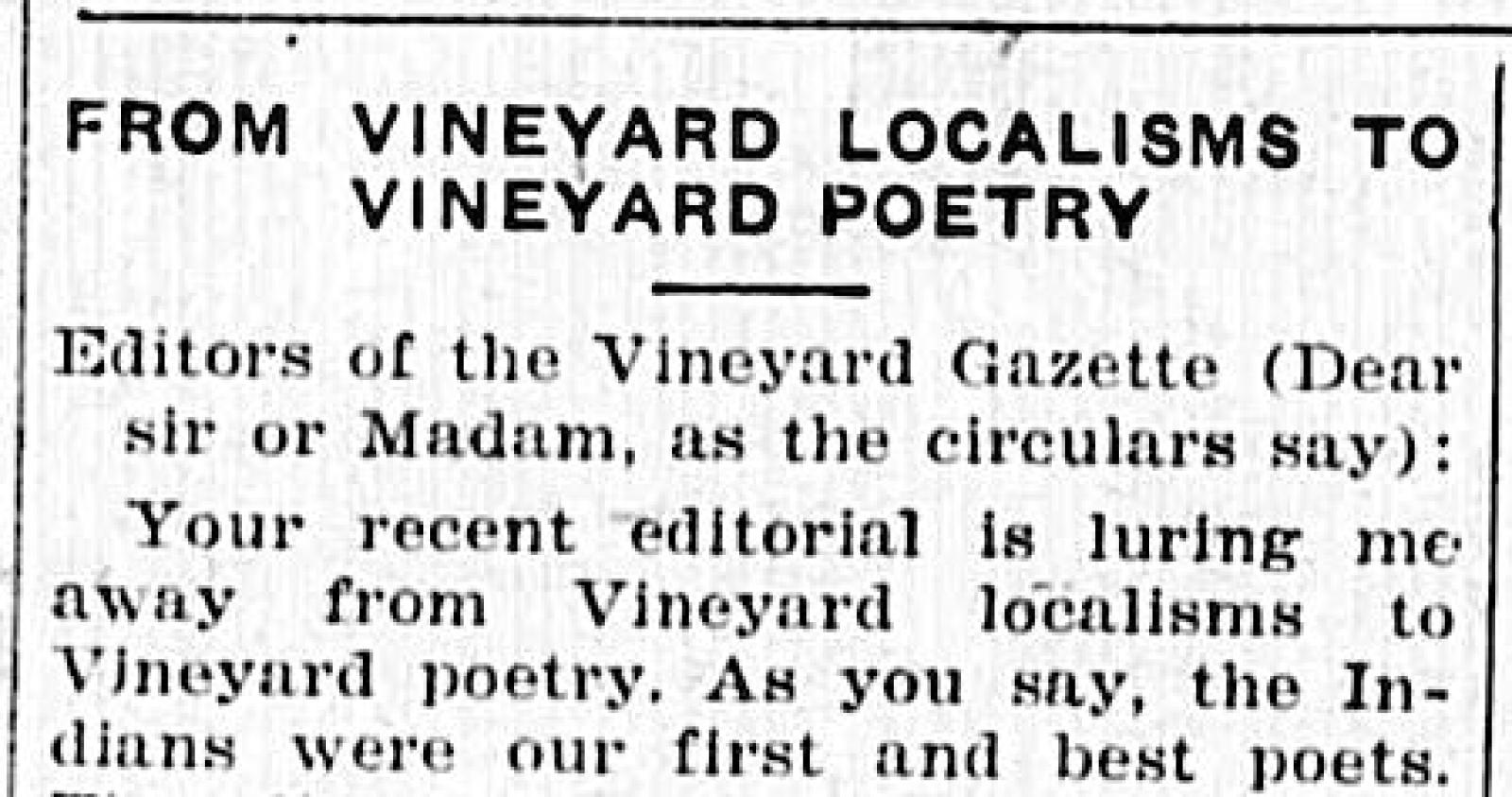
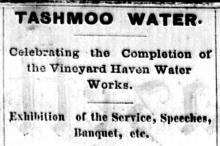

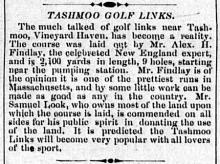
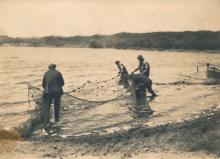
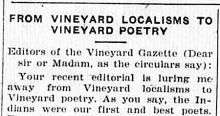
Comments